Moderation Platform
The Project
ViSenze helps its B2B clients to perform image tagging using the AI machine learning technology, so that the returned image search results are as accurate as possible.
Client needed a collaborative moderation platform to moderate and enrich the image tagging results of images from online marketplace to ensure accuracy of the system tagged results.
My role at Moderation Platform:- Translating business needs to design context to help my team understand the goals and needs.
- Design and prototype the end-to-end user interface of the collaborative moderation workflow.
- Drive design strategy and plan to balance out design resources, product releases and development constraints.
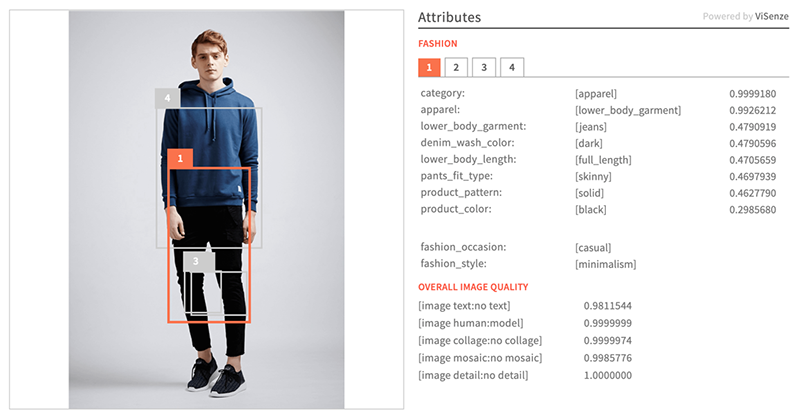
Challenges
- Lack of understanding customer’s pain points and their current moderation workflow.
- This new feature needs to be fit into an existing ViSenze Dashboard system. So, there needs to be a design and development strategy to maintain design consistency and progressively improve backend infrastructure to support this new feature.
- Scaling the platform to wider audience base with speed.
How does the platform benefit the client and their end consumers?
Before starting the design, I ensure that my team understood the business context and the motivation behind ViSenze's customers using the tagging moderation platform. After speaking to product manager and other key stakeholders, I mapped out a simplified B2B2C interaction map between ViSenze, it's B2B customers and the end consumers. This helped my team to design with a purpose in mind and how design can add value to the product.
Online Retailers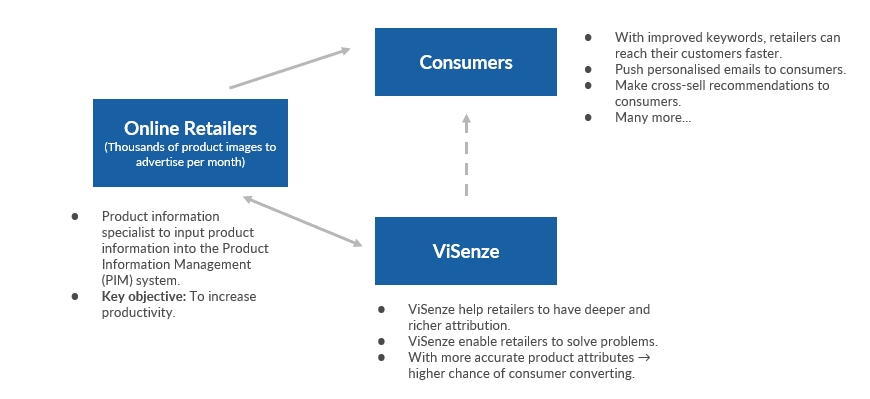 Marketplace Providers
Marketplace Providers
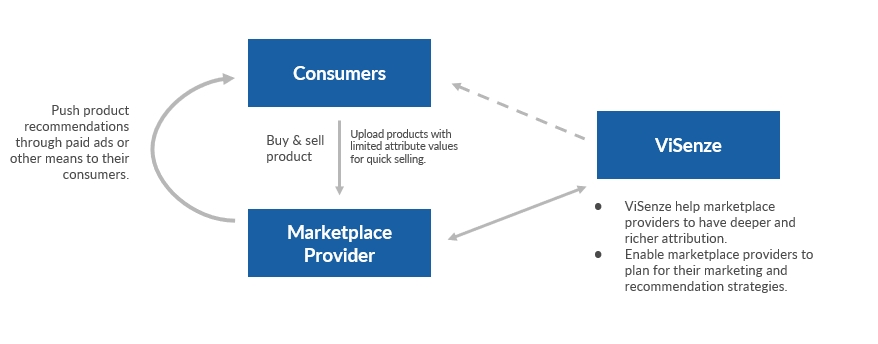
Target Audiences
Following, there was a few rounds of interaction with ViSenze's client to understand their current moderation workflow and the different roles involved. Three key roles were identified:
- Main Administrator: responsible for creating moderation tasks and assign to moderation administrator to start moderation and overall approval of the task.
- Moderation Administrator: responsible for accepting and delegating tasks to moderation member and semi-approving of task.
- Moderation Member: responsible for fast and accurate moderation of task.
Collaborative Moderation Flow
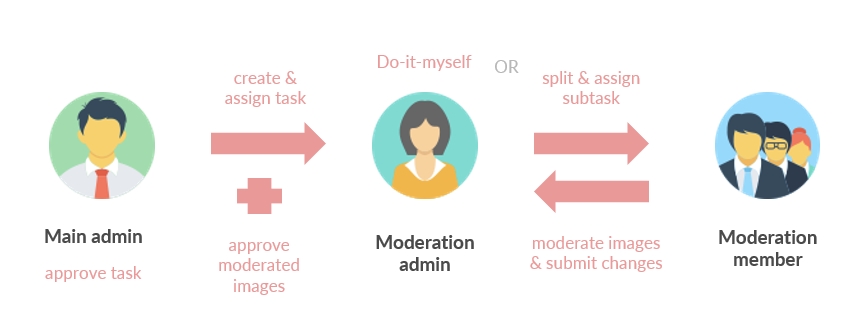
Within the project team, I saw the need to formulate a structured workflow of our "ideal" state after understanding the client's current working model. Gathering representatives from different teams (Product Manager, Dev Lead), I led the workflow mapping by coming up with an initial workflow and seek feedback on technical feasibilities, workflow logics and status terminologies.
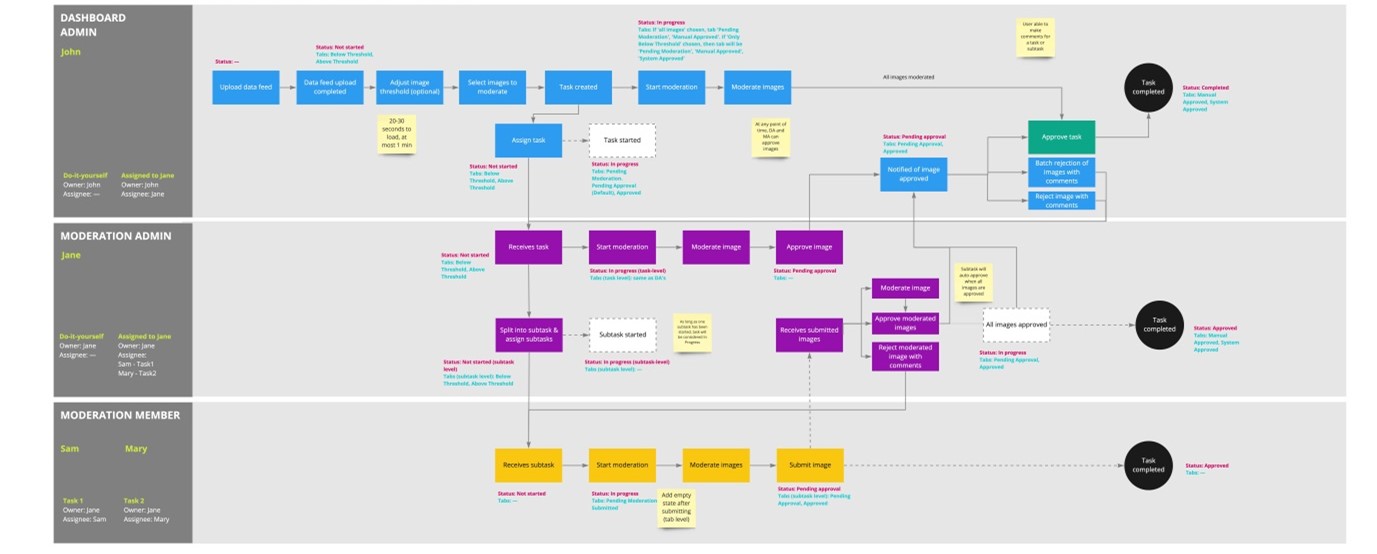
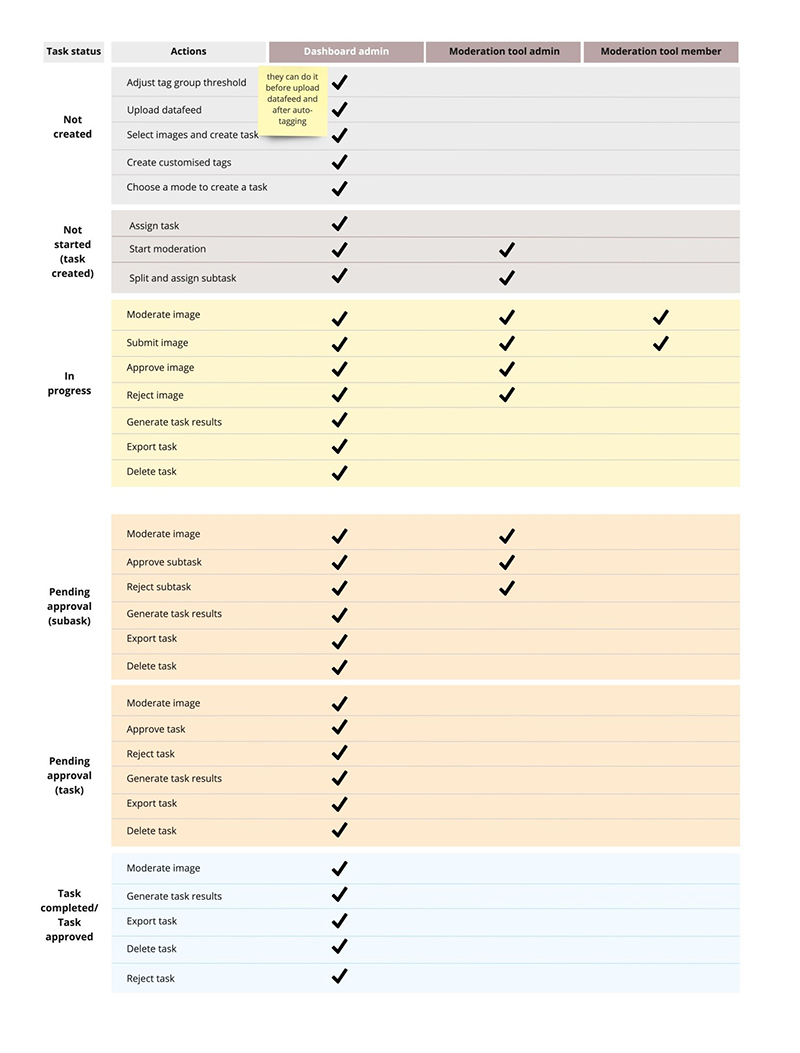
Design Strategy and Plan
- Due to several factors such as timeline, resource constraints and that the scope of work is huge, I passed on the skillsets of prototyping to my team member, and collaboratively, we co-created the interface prototype to get alignment with external stakeholders quickly.
In parallel, there was discussion with the Development Lead to get alignment on how to implement the new feature within existing Dashboard system. As the existing system used the previous version of the design system, we were unable to quickly migrate all the design components to meet client's timeline.
We discussed a few options and concluded for Phase 1 to focus on functionalities by retaining the existing system components while design team will design the interface using the new design system.
Phase 2 will focus on revamping the system by replacing all the components with the new design system. In this way, it provide designers with sufficient time to design the new Dashboard and development team gets time to implement the backend infrastructure change to support the new Dashboard and upcoming features.
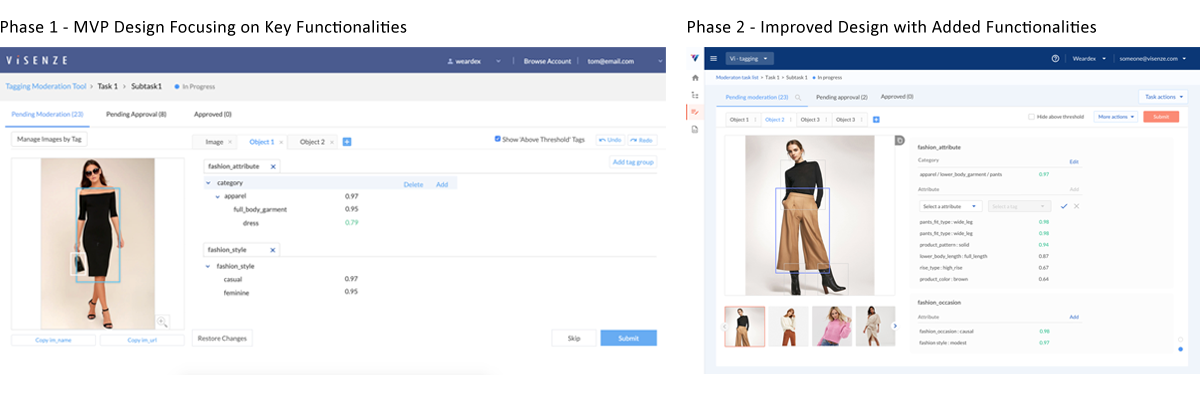
Design Solutions
There were several design requests and problems to be solved as we iterate the product with the client. Here are a few examples of how I tackle the design with the project team.
How might we allow a more efficient way of moderation?Apart from the inline adding and editing of image tag, we introduced a dual view (i.e. image view and tag view) for moderation. In a tag view, moderators can have an overall view of keyword tags and quickly review a certain keyword that has been tagged in the image. In an image view, moderators can view all tags for a given image in detail. These ways provide moderation flexibility and allow moderators to view specific details when required.
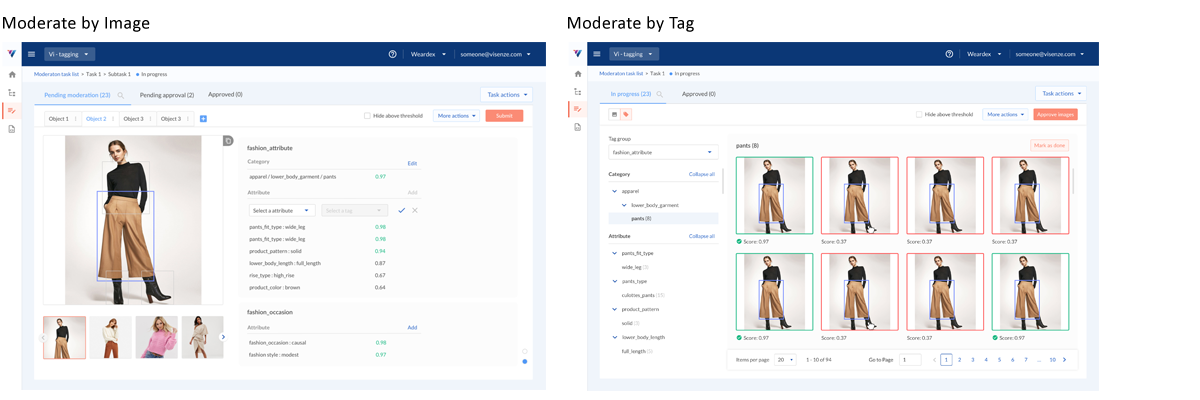 How might we help the moderation administrator to be fast and precise in approving the post-moderation results?
How might we help the moderation administrator to be fast and precise in approving the post-moderation results?
As we received feedback from client that their moderation routine is to review approximately 30% of the images per task, we decided to introduce thumbnails for quick inspection of tagged image results and multi-selection for approving of images.
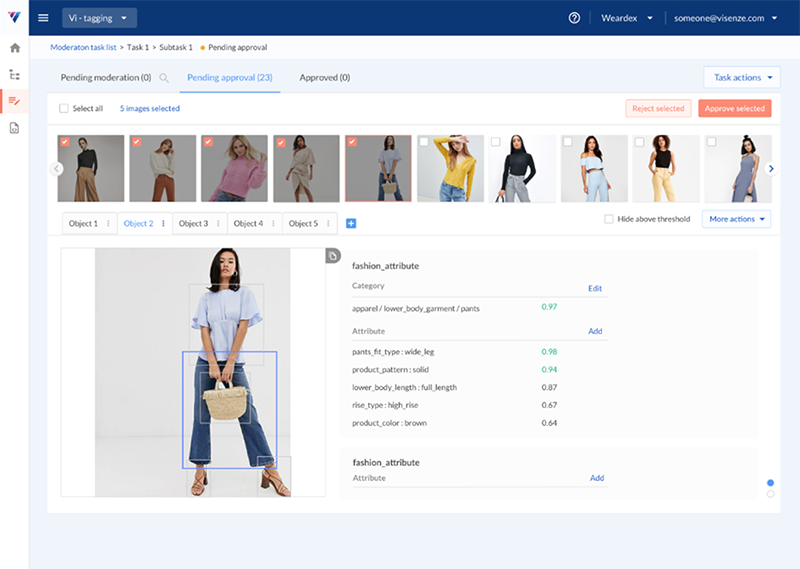 How might we help to improve the system tagging accuracy so that human moderation can be reduced?
How might we help to improve the system tagging accuracy so that human moderation can be reduced?
We find a need for a tagging performance report for analysis of tagging accuracy so that the recognition process can be improved. ViSenze can use this result to train and improve the data models and clients are made aware of how the system is performing to confidently approve high-performing keyword tags. (e.g. if 'sweater' has a high accuracy of being detected accurately, moderation administrator will be able to confidently approve images with the 'sweater' tag)
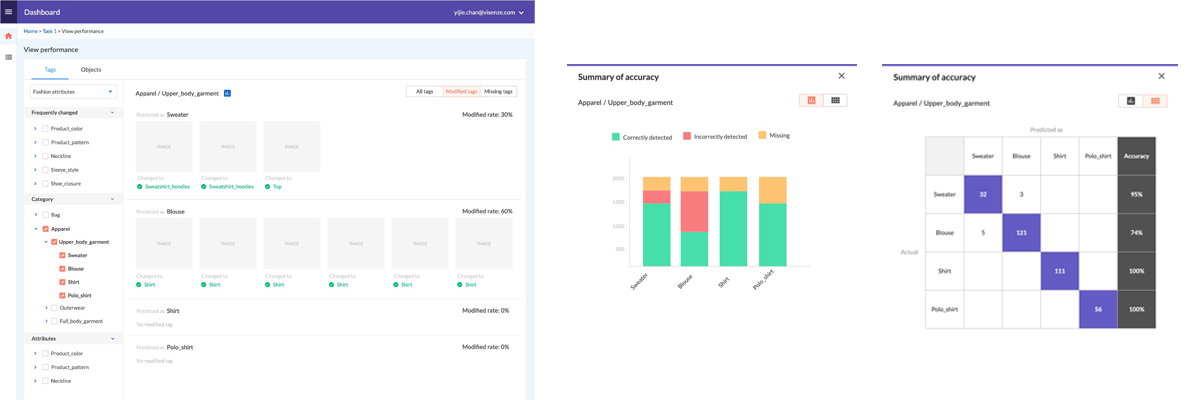
Outcomes
- With close collaboration with the client in uncovering the problems and iterating solutions that our team came up with, the platform was successfully launched and used by multiple clients for moderation process.
- During the design, I ensured that cross-functional teams are brought together to discuss how to resolve client's problem. In addition, delegating and leveraging on different design skillsets within my team to meet the tight timeline.